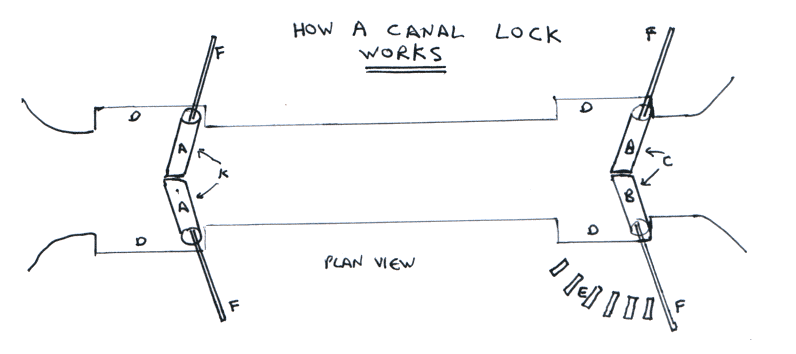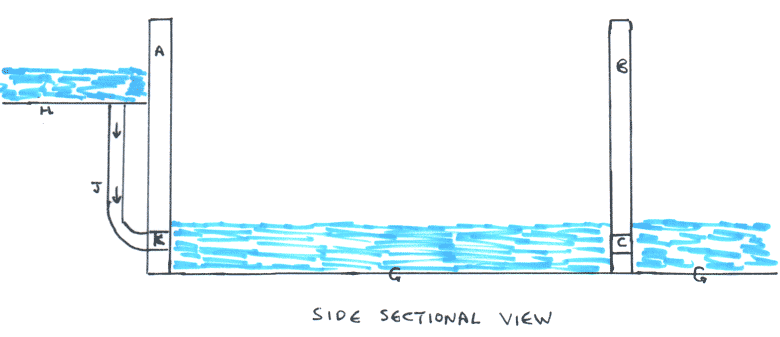The Life of Lewis
Copyright© 2021 by Lewis Lucas
Chapter 3: How a Canal Lock Works
Pedo Sex Story: Chapter 3: How a Canal Lock Works - Lewis is 15 and decides to get a Saturday job. Finding one in a Video hire shop helping Mike the manager, he finds himself earning a bit extra every week by having some interesting fitness tests followed by some relaxation including sex lessons and experiences which he thoroughly enjoys.
Caution: This Pedo Sex Story contains strong sexual content, including Ma/Fa mt/Fa Ma/Ma Ma/mt mt/mt Teenagers Coercion Consensual Rape Gay BiSexual Heterosexual Fiction Incest Torture Anal Sex First Massage Masturbation Oral Sex Petting Doctor/Nurse Teacher/Student

A = Upper Gates B = Lower Gates C = Lower Gate Paddles D = Gate Recces
E = Foot Holds F = Gate Arms K = Upper Gate Paddles
If you look at the plan view above, you will see that the lock gates (A & B ) close in a V shape and that the V points to the highest water level. This ensures that when closed, the weight of the water keeps them tight shut and watertight. In the bottom of each gate is a paddle or valve to let water in and out of the lock ( K & C ). These are opened by turning a handle on the mechanism on top of the gate or at the lock side. Each gate has a long heavy arm at the top which you push to open them. You push by putting your back against the arm ( F ) and pushing with your feet on the ridges ( E ). There are recess’s in the lock walls ( D ) for the gates to fit into when open, out of the way of the boat.

A = Upper Gates B = Lower Gates C = Lower Gate Paddles
G = Bottom of Lock and Lower Canal H = Bottom of Upper Canal
K = Upper Gate Paddles J = Water Duct from Upper Canal into Lock
So how does it work. Like most things, it’s easy once you know how.
Imagine a longboat ( they can be 69ft long ) sailing along on the lower level at the right of the drawing. You tie up and go to the lock. You close the valves (K) and open the lower valves© if necessary. When the water level in the lock is the same as the lower canal, you open gates (B) Then you can sail your boat into the lock.
Next you close gates (B) and then close valves©. Going to the other end of the lock, you open valves (K). Water from the higher canal then flows down pipe (J) and starts to fill the lock. Your boat rises up as the lock fills until it is level with the water in the higher level of the canal.
To read the complete story you need to be logged in:
Log In or
Register for a Free account
(Why register?)
* Allows you 3 stories to read in 24 hours.